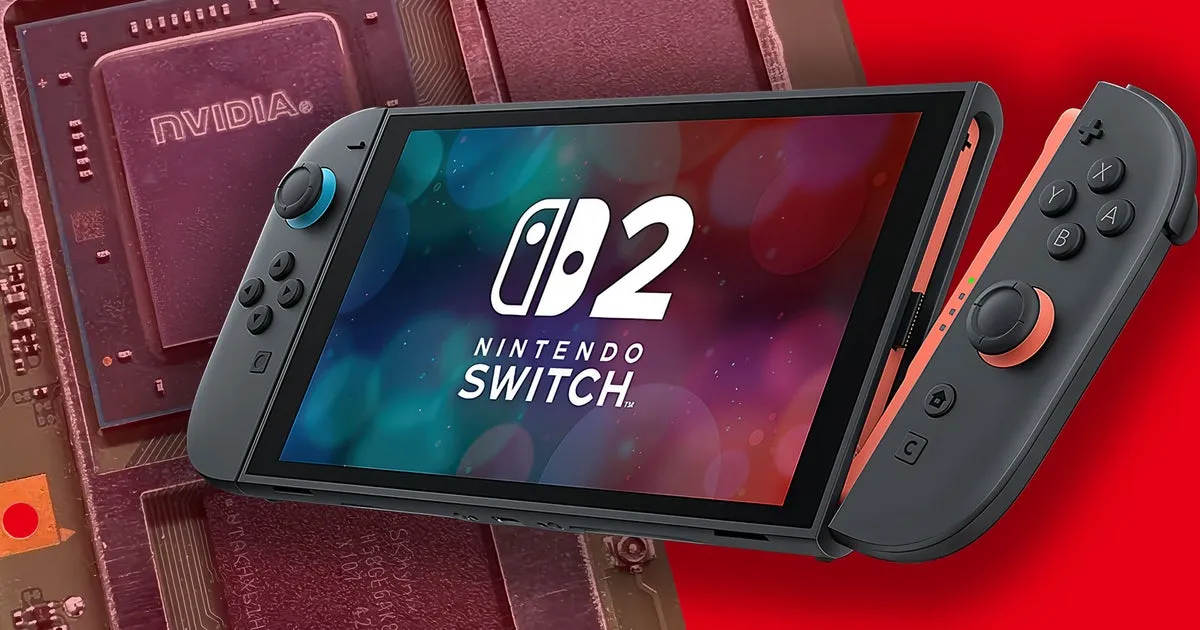
Nintendo has officially unveiled the technical specifications for its highly anticipated console, the Switch 2. However, it's important to note that the information provided is somewhat selective. This marks a notable shift for Nintendo, as the company had previously stepped back from competing directly with tech giants like Sony and Microsoft. As such, the recent release has generated significant interest, especially amid a void of substantial details. While we have discussed intriguing leaks surrounding the new console's T239 processor in prior articles, this piece aims to clarify the specifications and outline some limitations developers may face while working with the Switch 2.
Much of the newly available information focuses on the most ambiguous aspect of the official specifications: the custom processor developed by Nvidia. When the original Switch debuted, Nintendo referred to its CPU as a custom Nvidia Tegra processor, which was essentially a standard Tegra X1. In contrast, the Switch 2's system-on-chip (SoC), identified in shipping manifests and Nvidia leaks as the T239, is genuinely custom silicon tailored specifically for Nintendo's next-generation console.
The newly confirmed specifications align closely with previous leaks, revealing that Nvidia and Nintendo have chosen the ARM Cortex A78C as the CPU. This processor operates on the ARMv8 64-bit instruction set, with cryptography extensions enabled, meaning that 32-bit support is absent from the software development kit (SDK). According to the official ARM specifications, the Switch 2's CPU features 64K of L1 instruction cache and an additional 64K of L1 data cache. Furthermore, each of the eight cores has 256K of L2 cache, while all cores can share a total of 4MB of L3 cache.
To provide context, the original Switch utilized four ARM Cortex A57 cores, with one core reserved for the operating system and three available for developers. The Switch 2 mirrors this setup by reserving two cores for system operations, leaving six cores available for game development. The CPU clock speeds have been confirmed, yet they remain somewhat enigmatic: in mobile mode, the CPU operates at 1100MHz, while performance mode sees it drop to 998MHz. Although one might wonder why the mobile mode clock speeds exceed those in performance mode, it's theorized that the memory bandwidth limitations in mobile mode could influence CPU performance.
Transitioning to the graphics capabilities, the Switch 2 utilizes the Ampere architecture, a significant upgrade from the Maxwell architecture found in the original Switch. The console boasts 1536 CUDA cores, with clock speeds confirmed at 561MHz for handheld mode and 1007MHz for docked mode. Additionally, a maximum clock speed of 1.4GHz is stated, although it remains unclear if developers can exceed the standard clock rates. While developers do not have full access to GPU resources due to system reservations, the Switch 2 is rated for 3.072 TFLOPs in docked mode, which translates to approximately 1.71 TFLOPs in mobile mode.
The integration of DLSS (Deep Learning Super Sampling) and ray tracing features are also confirmed, with the Switch 2 capable of approximately 10 gigarays per second, doubling to 20 gigarays in docked mode. It is important to note that ray tracing is resource-intensive, and thus, it has not yet been showcased in any games. However, as developers become familiar with the hardware, we can expect to see this feature utilized effectively in the future.
In terms of memory, the Switch 2 is equipped with 12GB of LPDDR5X RAM, a marked improvement over the original Switch's 4GB. Of this total, 3GB is reserved for system functions, leaving 9GB available for developers. This allocation is a significant enhancement compared to the previous console, which only allowed 3.2GB for game development.
Further solidifying its advancements, the Switch 2 features a custom File Decompression Engine (FDE), facilitating faster loading times. It includes 256GB of UFS storage, which can be expanded using MicroSD Express cards up to 2TB. The FDE is designed to handle LZ4 compressed files efficiently, allowing for quicker data processing compared to traditional CPU decompression methods.
The display specifications for the Switch 2 include a 7.9-inch wide color gamut LCD screen with a 1080p resolution, supporting HDR10 and variable refresh rates (VRR) up to 120Hz. Notably, it retains the ten-point multi-touch capacitive touchscreen feature seen in the original Switch. However, it is crucial to clarify that VRR is currently limited to the internal display and does not extend to HDMI output, a limitation that many hope Nintendo addresses in the future.
Game Chat has emerged as an essential feature for the Switch 2, yet it poses challenges to system resources. Nintendo has provided developers with a Game Chat testing tool to simulate API latency and cache misses, allowing for performance assessments without active sessions. This aspect of the Switch 2 is likely to impact game performance, and developers are keenly observing its effects.
The Nintendo Switch 2's hardware specifications, alongside the extensive leaks leading up to its announcement, paint a promising picture for the console's capabilities. With the SDK fully supporting Nvidia's DLSS, developers can create visually stunning games optimized for the Switch 2's unique architecture. As we eagerly await the console's launch, particularly looking towards June 5th, it is clear that the games will ultimately determine the success of this innovative platform.